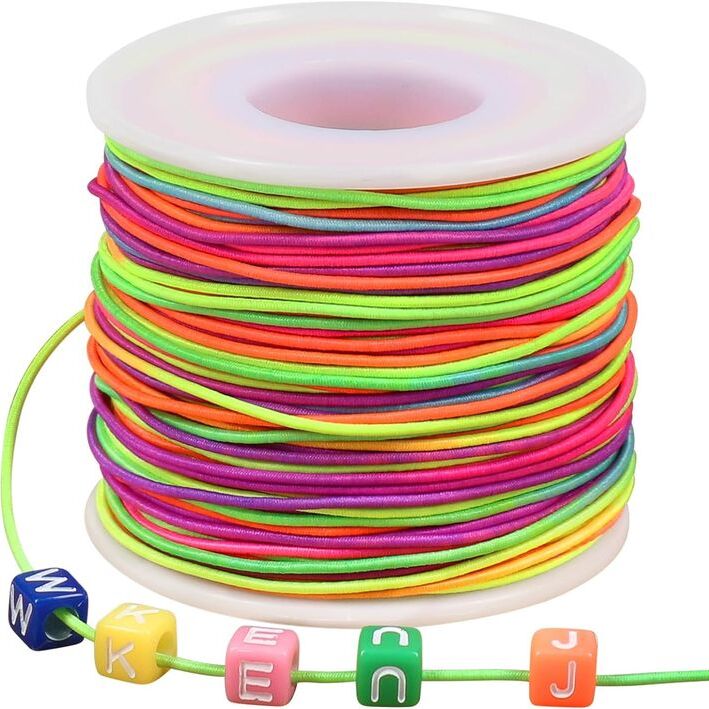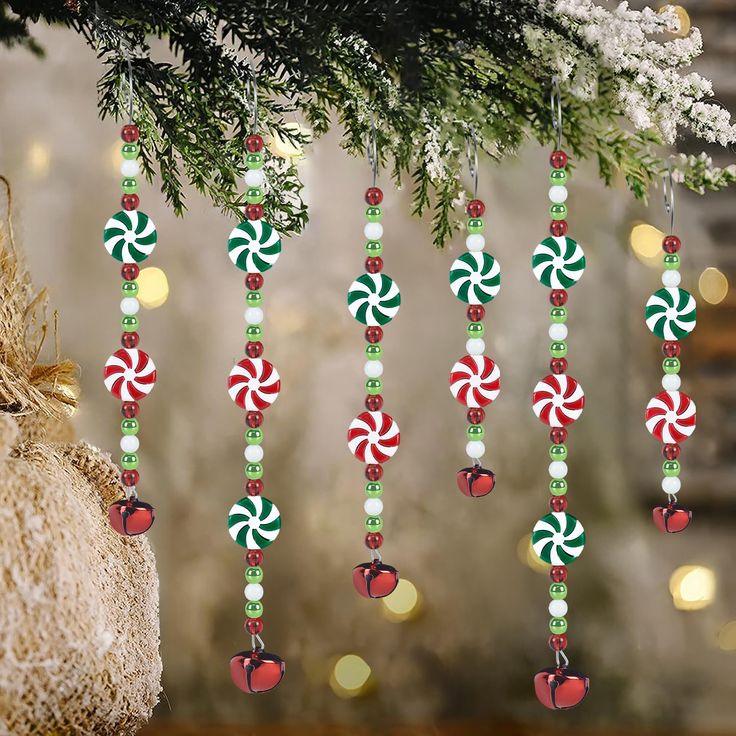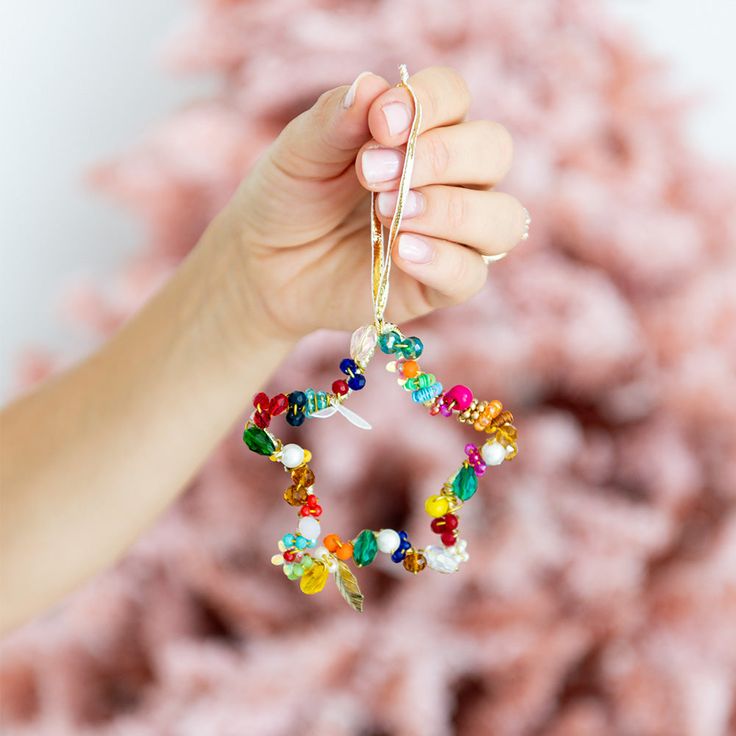When it comes to beading, especially for special occasions like Christmas, having the right materials can make all the difference. Among these materials, the strongest string for beading is critical to ensure your creations hold up during the rigors of holiday festivities. Whether you’re crafting ornaments, jewelry, or garlands, employing the right type of string can enhance both the beauty and durability of your projects. In this article, we will explore the top choices for the strongest string for beading that will help you get through your holiday crafts with ease and satisfaction.

Overview of String Materials for Beading
Beading enthusiasts know that picking the right string material can make or break a piece of jewelry. The choice affects both the piece’s look and its lasting power. Let’s look at some top string options and what sets them apart.
Nylon thread stands out for its mix of toughness and flexibility, ideal for beading. It suits diverse bead sizes and comes in various thicknesses. It’s great for detailed patterns or smaller beads.
Waxed cotton cord gives a piece an earthy vibe. It’s quite strong but may fray with time. With a natural look, it’s perfect for boho jewelry.
Leather cord brings a sturdy and masculine feel. Available in different hues and sizes, it’s versatile and durable. Whether in men’s or women’s bracelets, it holds up well.
Silk thread is the pick for elegance. It adds a gentle shine and smooth texture. It’s superb with glass or gemstone beads. Handle with care, as it’s less resilient than others.
Elastic cord, notably stretchy, offers ease of wear. It’s ideal for bracelets that need to slip on and off. Elasticity varies, so choose based on bead weight.
In summary, each material has traits that cater to different styles and bead types. Your design vision and the beads’ needs should guide your choice.
Nylon Thread: Durability and Flexibility
Nylon thread is a top choice for beaders. It combines strength with flexibility, making it useful for various designs. It’s suitable for detailed patterns and works well with smaller beads. You can rely on it for projects that need long-lasting wear. Whether it’s for intricate lace patterns or durable daily wear pieces, nylon delivers.
Types and Uses of Nylon Thread in Beading
Nylon thread comes in various thicknesses. Each thickness suits different bead sizes and project needs. Thin threads are great for small, delicate beads. Thicker threads handle larger beads or heavy designs. You can use nylon for almost any beading project. Its ability to stretch slightly helps to prevent breakage under strain. This makes it ideal for bracelets and necklaces that need some give.

Waxed Cotton Cord: The Natural Choice
Waxed cotton cord suits those who prefer a natural, earthy aesthetic. Its coated texture offers a unique, rugged look, ideal for boho or vintage-inspired jewelry. This string material blends organic beauty with a reasonable degree of durability, making it a popular choice for bracelets and necklaces.
Application and Durability of Waxed Cotton Cord
The application of waxed cotton cord in jewelry spans a wide range. It’s excellent for wrapping bracelets or creating macramé pieces. During beading, it threads through most bead types unless the holes are very small. Over time, waxed cotton may fray with frequent wear. However, it generally maintains its integrity well enough for long-lasting enjoyment with reasonable care. Keep it away from excessive water to preserve its look and durability. This cord’s slight wax coating adds to its aesthetic appeal while offering an extra layer of protection against environmental elements.
Leather Cord: Rugged Elegance
Leather cord brings endurance and style to beaded jewelry. Its sturdy nature handles daily wear with ease. Available in various colors and thicknesses, it fits many designs. It’s perfect for creating pieces that stand out due to its distinct look.
Varied Uses of Leather Cord in Jewelry
Leather cord is ideal for those who love versatility. It adorns everything from simple bracelets to intricate necklaces. Creatives often choose it for its rugged look which catches the eye. Its thickness allows for use with larger beads or charms. Many prefer it for men’s jewelry, though it’s great for anyone.

Silk Thread: Delicacy in Design
Silk thread offers a touch of elegance in beading. It’s known for its shine and smoothness. This thread is perfect for projects with glass or gemstone beads. It gives beaded jewelry a luxurious feel. But silk thread is less strong than other materials like nylon or leather.
Challenges and Care for Silk Thread
Silk thread is delicate. It can break easily if not handled with care. This thread is not the best for heavy beads or everyday wear. When using silk, avoid pulling too hard. This helps prevent snapping. Knots should be simple and not too tight. Avoid getting silk thread wet as it can weaken the fibers. Store silk-beaded jewelry in a dry place away from direct sunlight. With careful use and storage, silk thread can last and keep your jewelry looking beautiful.
Elastic Cord Varieties
Elastic cords are essential for beaded bracelets that need flexibility. This section explores different types of elastic cords available for beading projects.
Single Strand Rubber Cord
Single strand rubber cord is known for its durability and firmness. It is round and rubbery, making it reliable for heavy beads. Use surgeon’s knots for securing this cord, and add a drop of glue for extra security. It’s best for beads that are not too small.
Stretch Floss
Stretch floss consists of multiple woven strands, making it easier to knot. It’s suitable for smaller beads and comes in limited colors. Stretch floss is a good choice for adjustable bracelets, as it has good stretch memory.
Polyester Cord with Elastic Core
This type of cord combines polyester coating with an elastic core. It is available in various colors, including some with sparkle. While often used in visible applications like hair accessories, it can also string larger beads well. Choose this cord for a mix of strength and aesthetics.
Selecting the Right Size of String for Bead Projects
Choosing the right size string for beading is crucial. It affects the bracelet’s fit and look. Here’s how to pick the perfect size.
Measuring and Sizing Guide
Start by measuring your wrist. Use a flexible tape or a string and a ruler. Add half to one inch to this measurement for the beads and knots.
Pick your beads before the string. Go for the thickest string that fits through the bead holes. If the holes are large, a single strand may do. If they are small, you might need a thin string that can double up.
Think about the knots you’ll use. They will take up some length, so plan for this. Surgeon’s knots work well with elastic cords, use them with a dab of glue for extra hold.
If you can, try the cord before you buy. Visit a local bead store if possible. This way, you can make sure the string fits the beads well.
When shopping online, check bead hole sizes listed in descriptions. Choose a string that’s a bit smaller than the bead holes for a snug fit.
By considering these tips, you’ll find the strongest string for beading. You’ll have a bracelet that’s not just stylish but also comfy and durable.
Factors to Consider When Choosing a Beading String
When crafting beautiful jewelry pieces, selecting the right beading string is crucial for ensuring both aesthetics and durability. Several important factors should be carefully considered to achieve the best results. First, the type of beads you are using plays a significant role in determining the strength required for the string. For instance, heavy or sharp-edged beads necessitate a sturdier string to handle their weight and prevent breakage. Additionally, wrist size influences the string length you will need; it’s important to account for extra length to allow for knots and to ensure comfort when wearing the finished piece. Furthermore, the knotting techniques employed can also impact the choice of string, as secure knots require materials that resist slipping or fraying, ensuring longevity in your jewelry. By thoughtfully considering these factors, you can create stunning and enduring jewelry pieces that will be cherished for years to come.
Merry Christmas and a Happy New Year! May all your dreams come true.